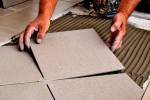Manufacturer bemoans demise of incandescent light bulb
The plain and simple truth is this: "The incandescent light bulb we all love is going to die," according to Eleanor McKay, chief executive officer of Niermann Weeks, which designs and manufactures lighting fixtures.
In her entertaining but often blunt presentation at the Las Vegas Design Center, McKay told interior designers gathered for the monthly First Friday event that they must complain and whine whenever possible about the changes the federal government is mandating for the lighting industry. These changes will eliminate the warm glow and aesthetically pleasing light produced by incandescent bulbs, as well as create challenges for consumers to find suitable replacements for their current light fixtures.
The changes are the result of the Energy Independence and Security Act of 2007, which requires 25 percent greater efficiency for light bulbs, phased in from 2012 through 2014, and 200 percent greater efficiency by 2020. The act basically bans the sale of most incandescent light bulbs currently available.
Incandescent bulbs are being targeted because 80 percent of the power they give off is as free-floating heat, which contributes negatively to global warming. Light created by incandescent bulbs is actually tiny filaments burning within the bulbs.
"Ever since the first caveman, people have loved fire. There's something about the little fire inside this bulb that makes our hearts go chinka chinka," McKay said while holding up a standard incandescent light bulb.
According to McKay, replacements for incandescent bulbs on the market do not quite work, many cannot be dimmed and are extraordinarily expensive.
"We need a really good alternative," McKay said. "Designers need to lobby intensively with their lighting suppliers."
Existing alternatives are compact fluorescent lights, halogen lights and light-emitting diodes or LEDs. Showing samples of each type of lighting, McKay also pointed out their flaws.
While compact fluorescent lights use considerably less energy and have a significantly longer life, they are filled with mercury vapor that is hazardous to a person's health and must be disposed of properly. Additionally, they generally operate on a multiprong system instead of the screw-in base of incandescent bulbs, which means consumers have to know what type of base they have before getting replacements.
"I don't want to have to be really smart to go into a store to buy a light bulb. I just want to buy a light bulb," she said.
She said halogen lights get too hot and also have pronged bases, while LEDs are cute, gimmicky things that don't produce a lot of light unless they are bundled in groups.
"We need engineers to create (an efficient replacement), but we need aesthetic solutions. What may thrill the engineers may revolt those of us with aesthetic sensibilities," she said.
Until a suitable solution is created, McKay vows to hoard as many incandescent light bulbs as she can.




















